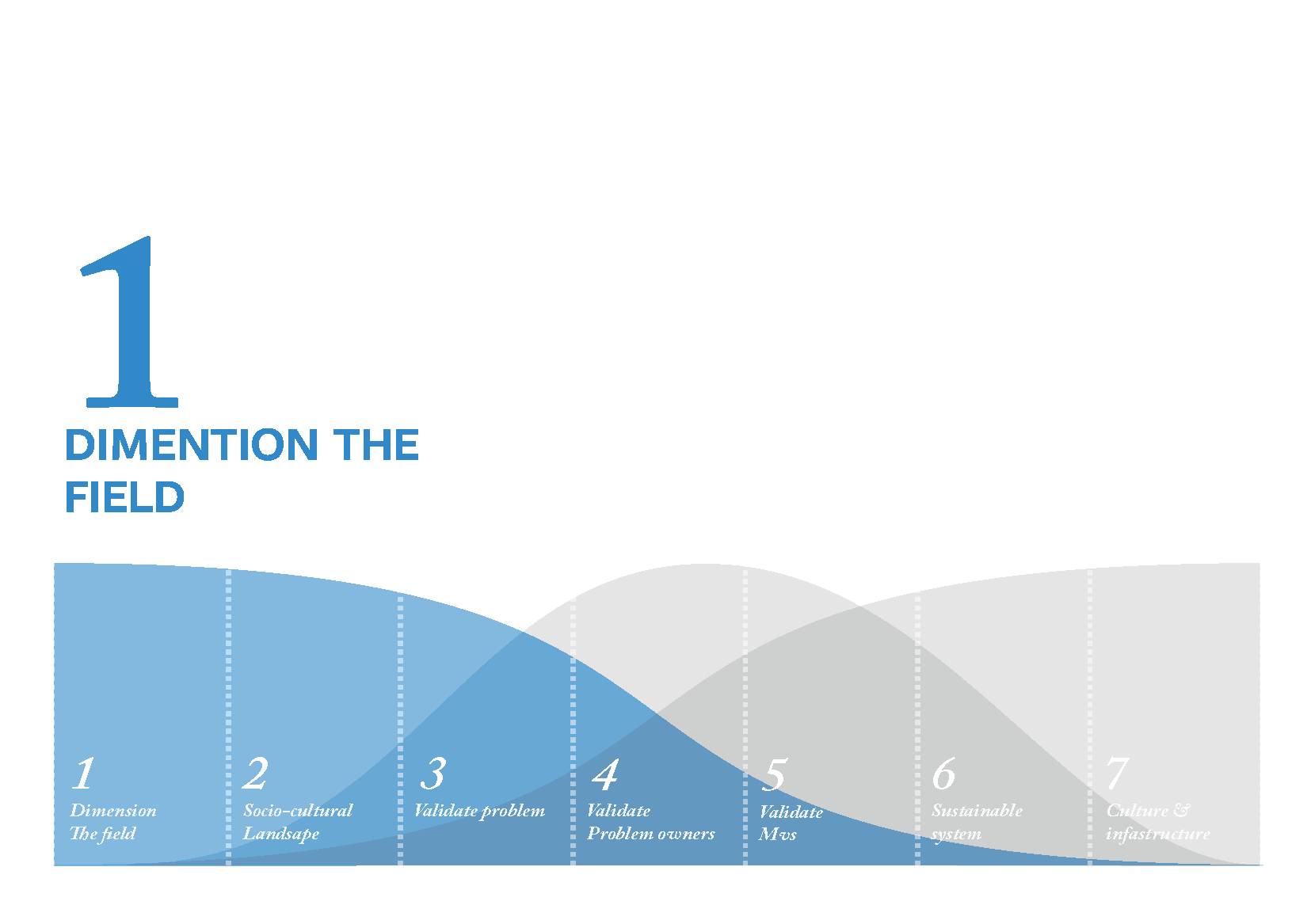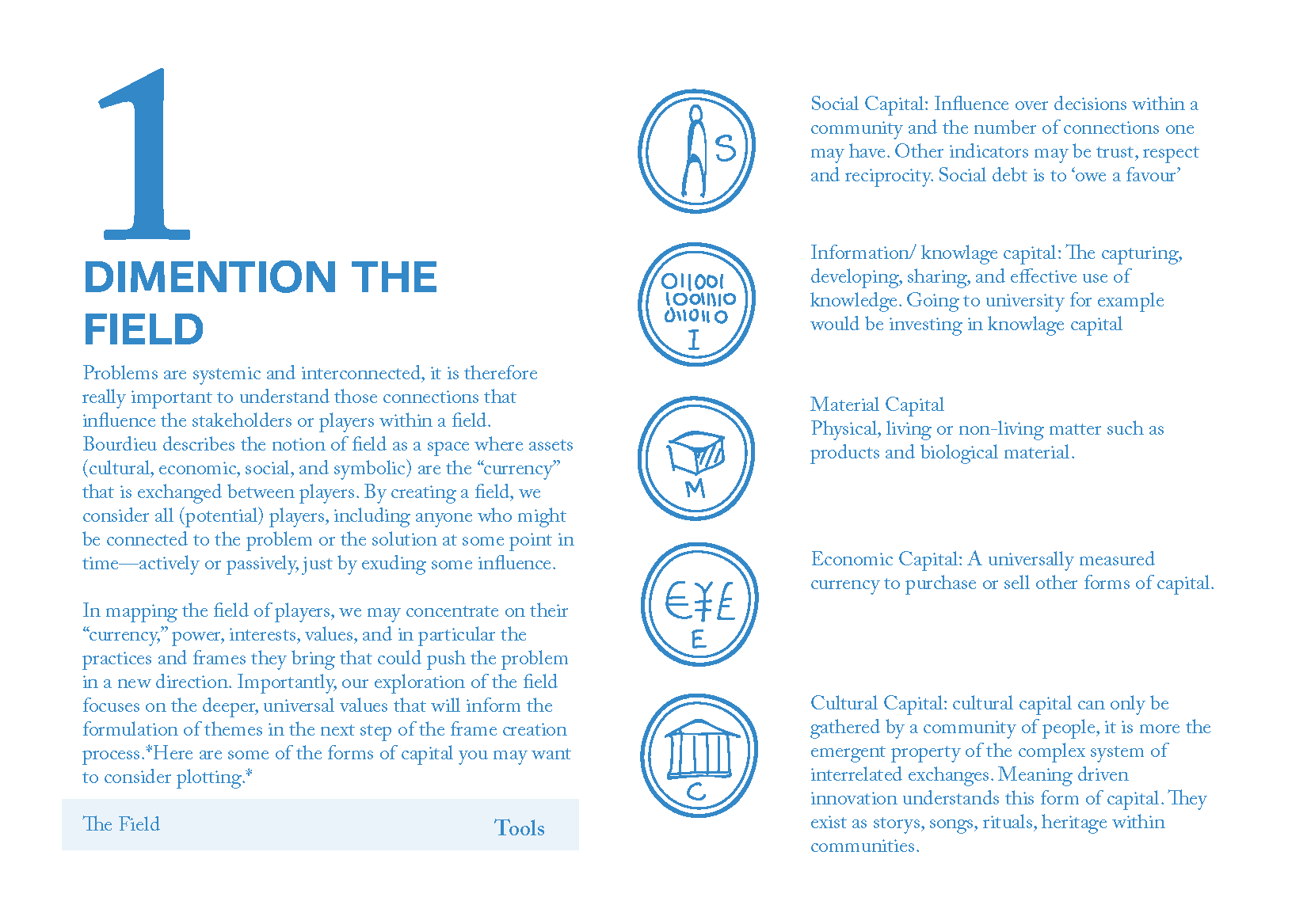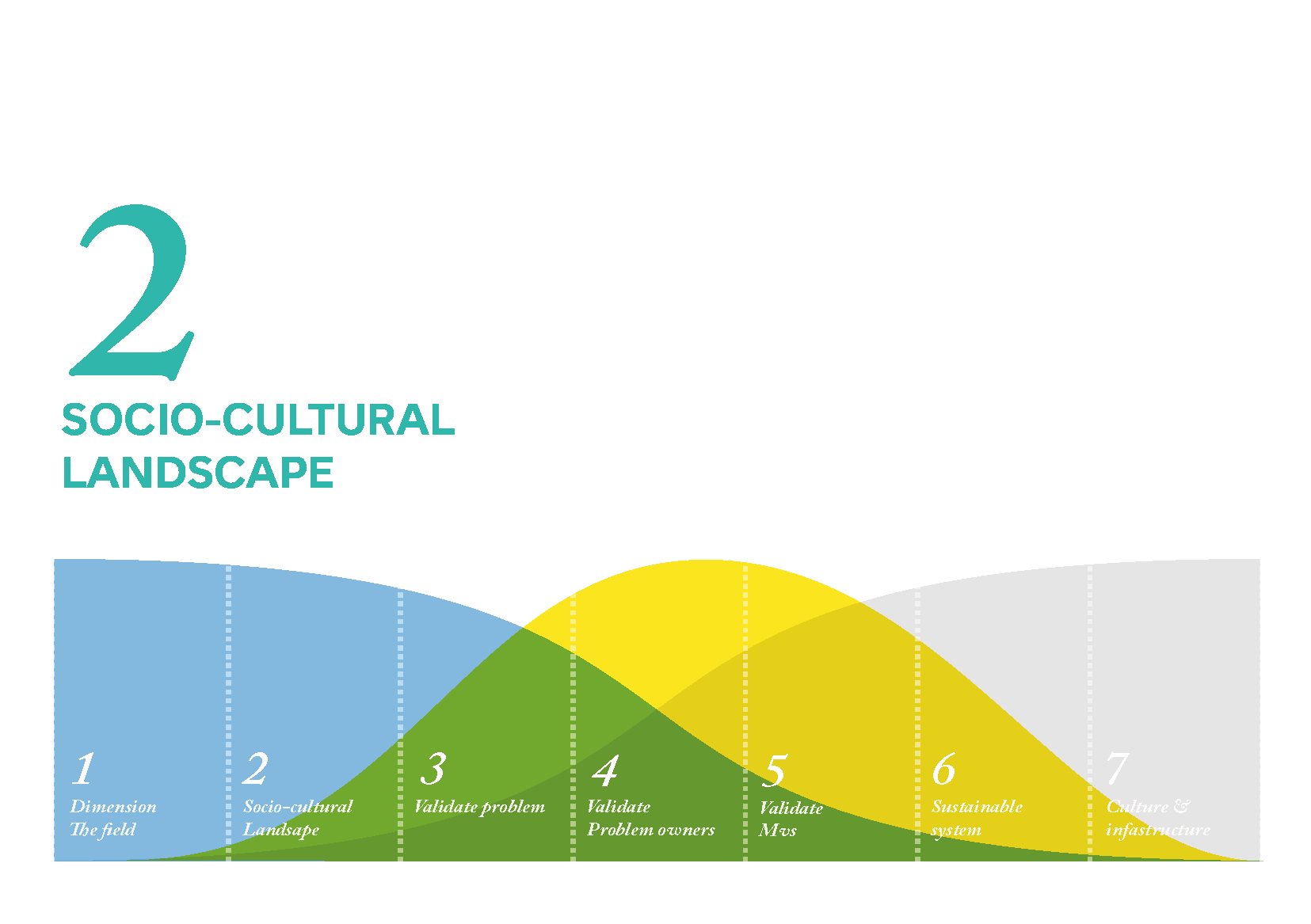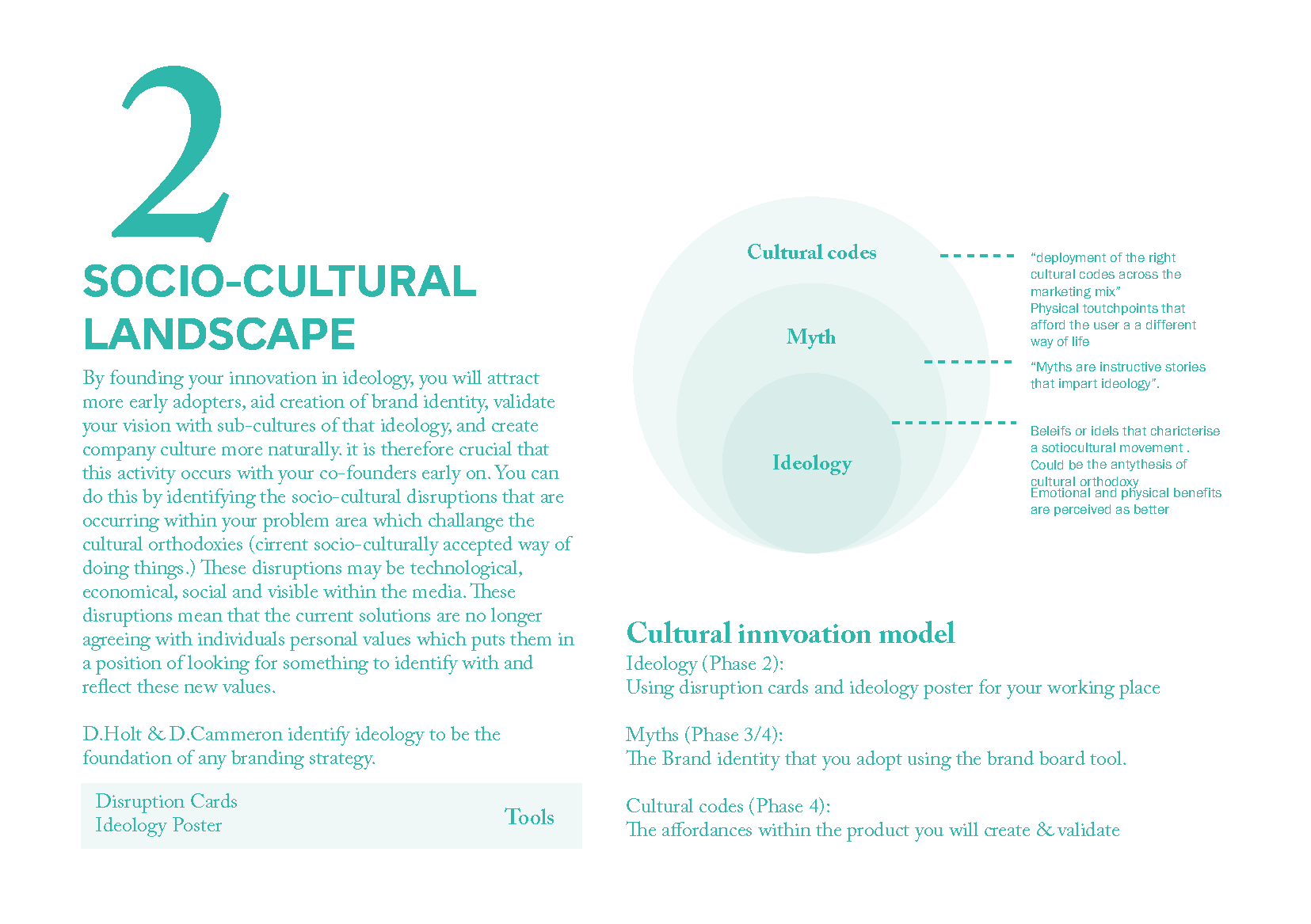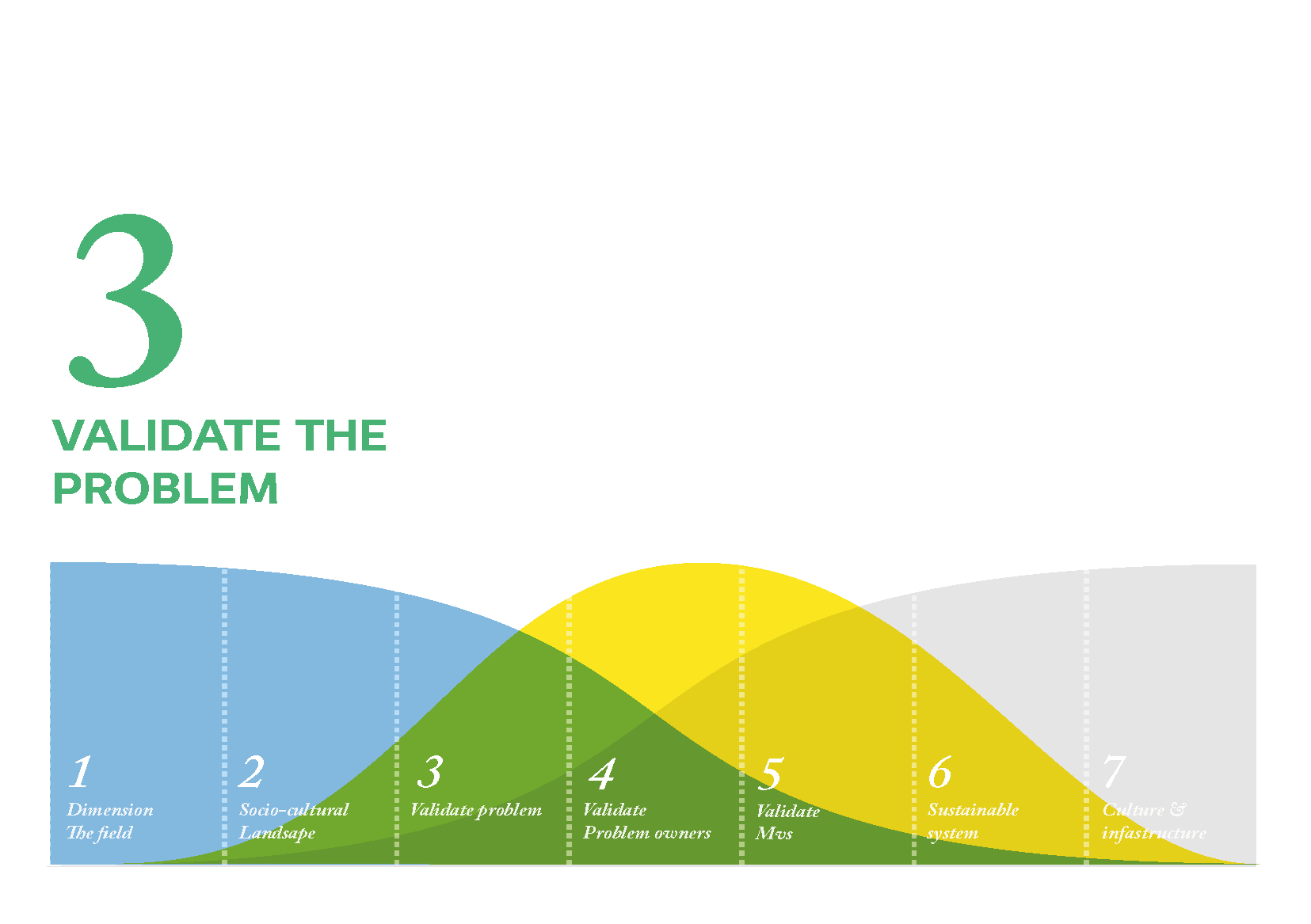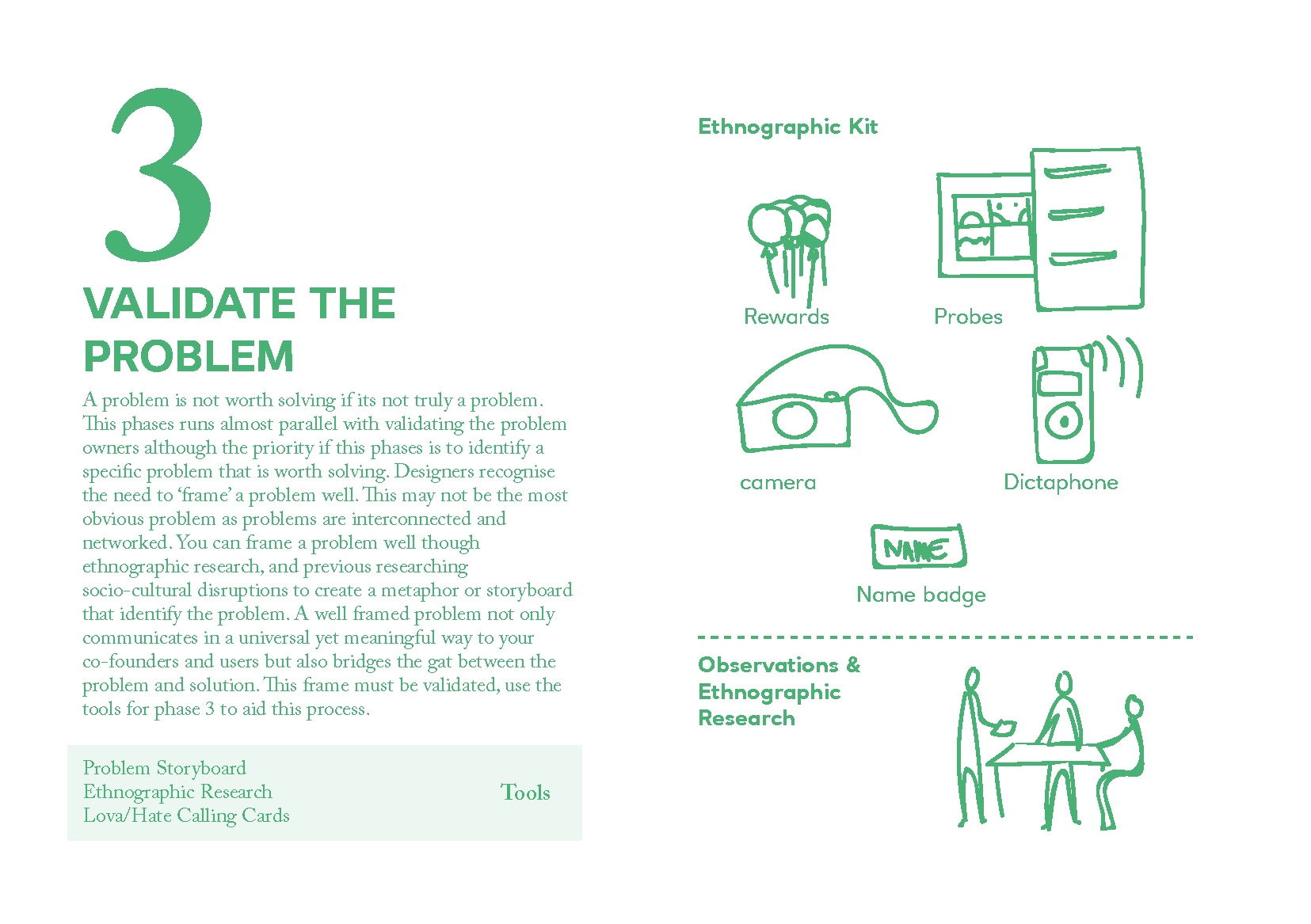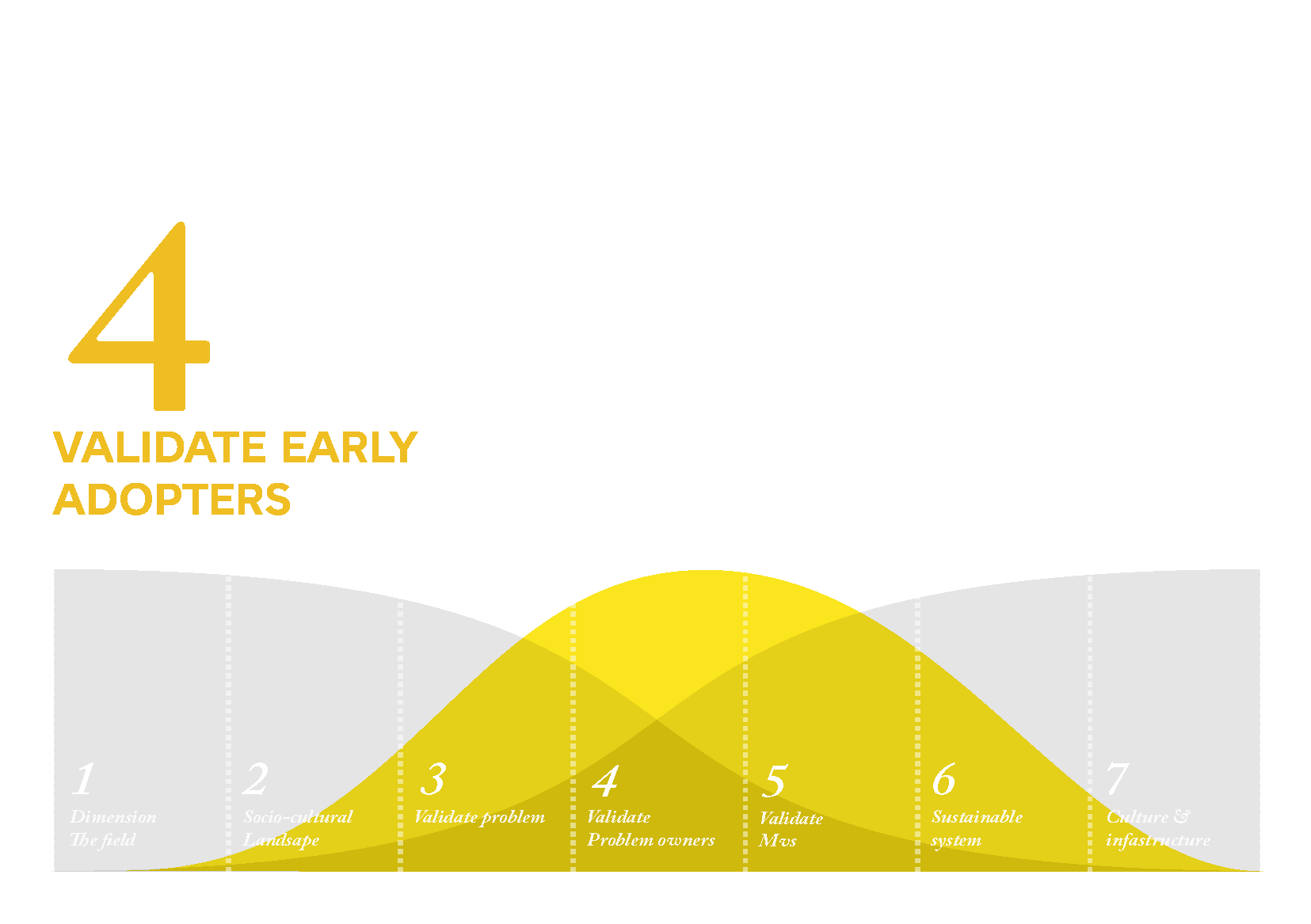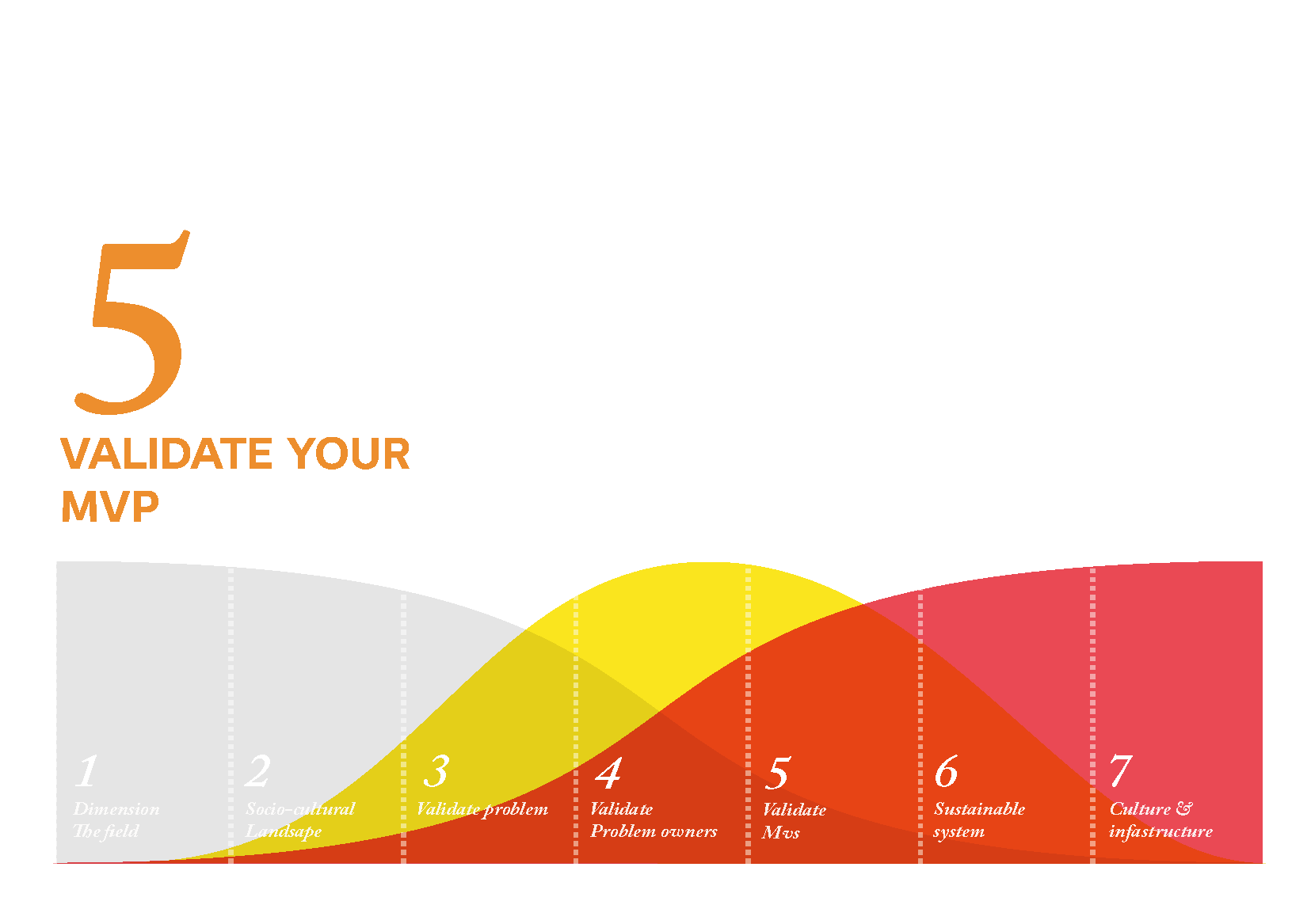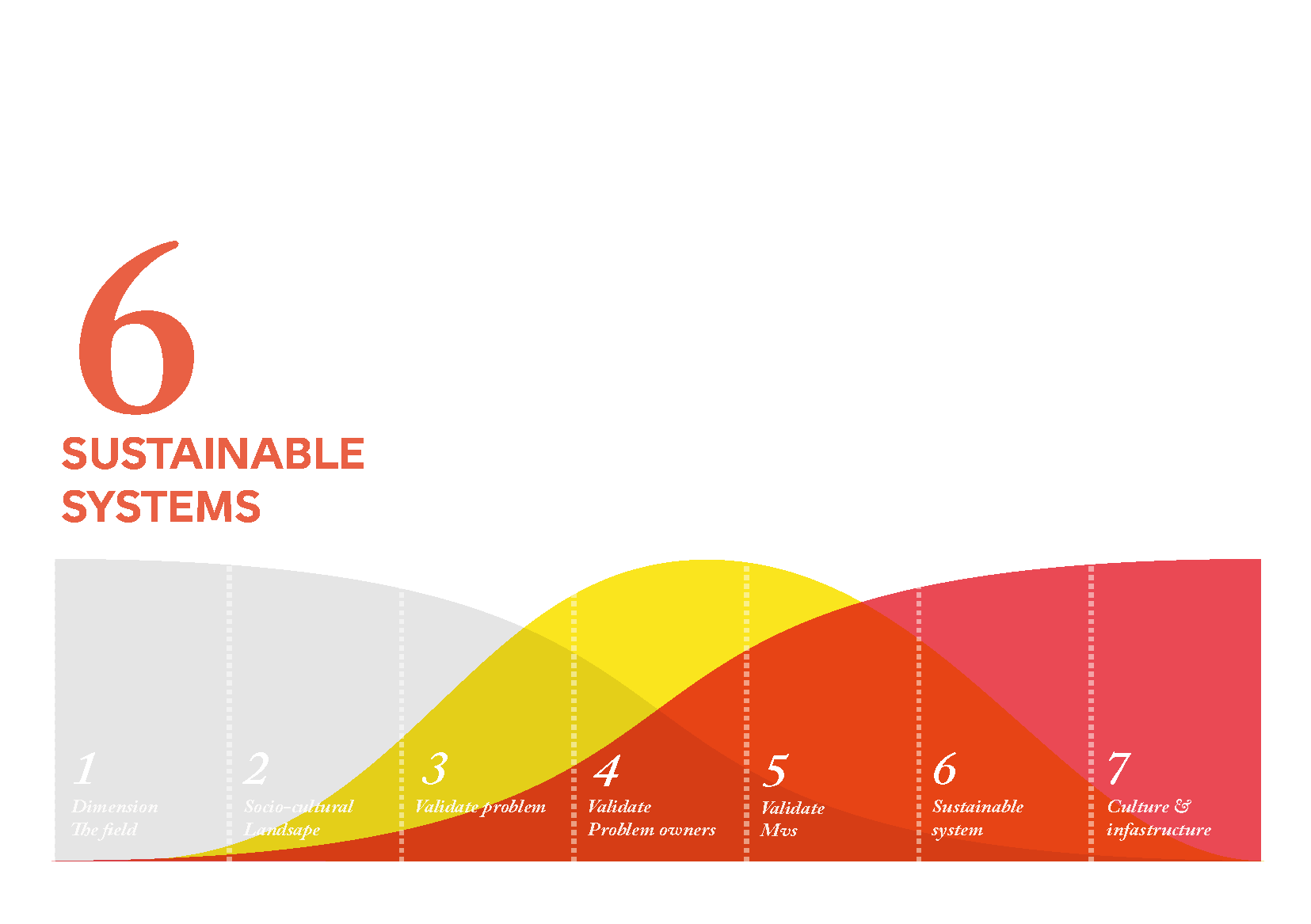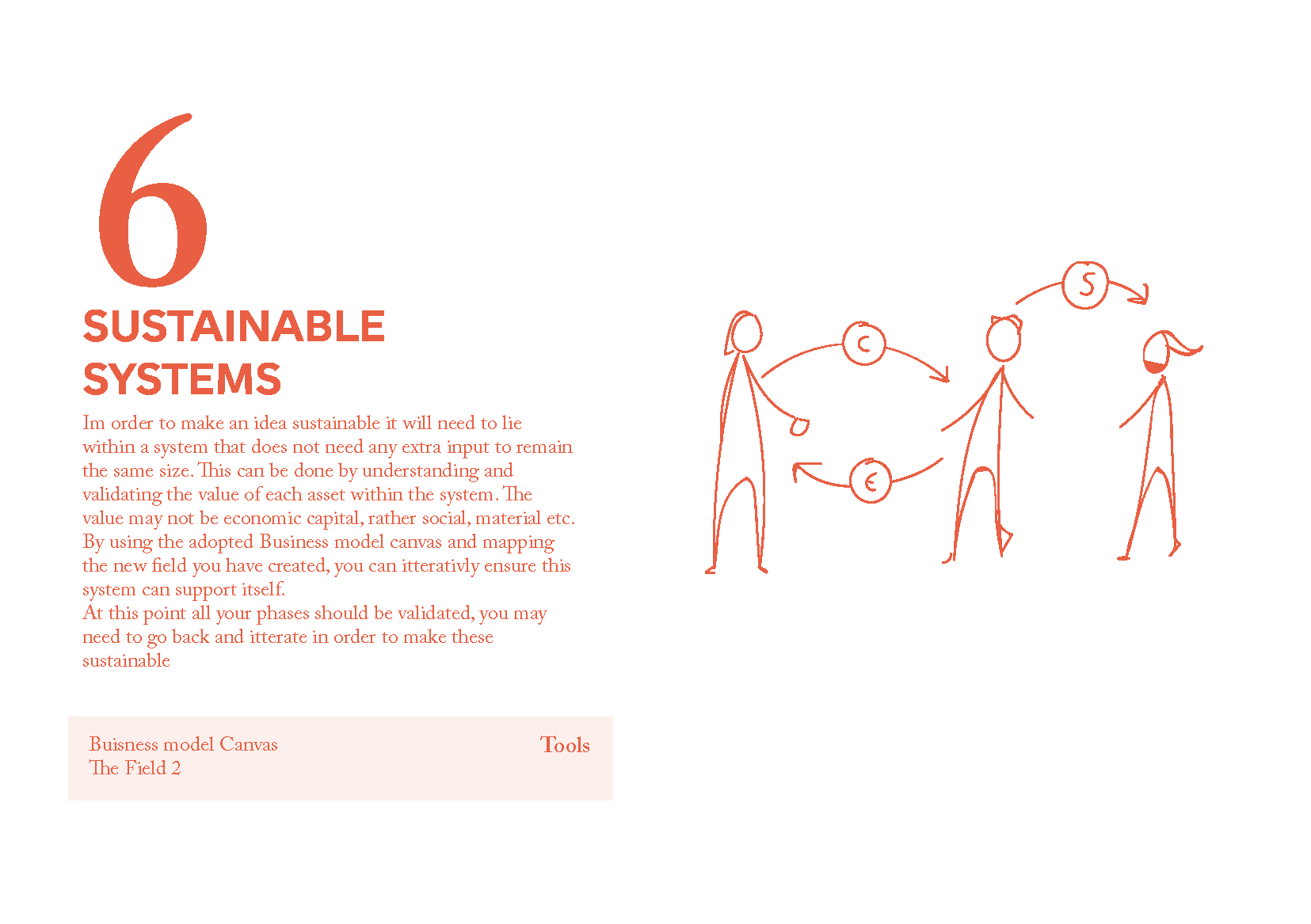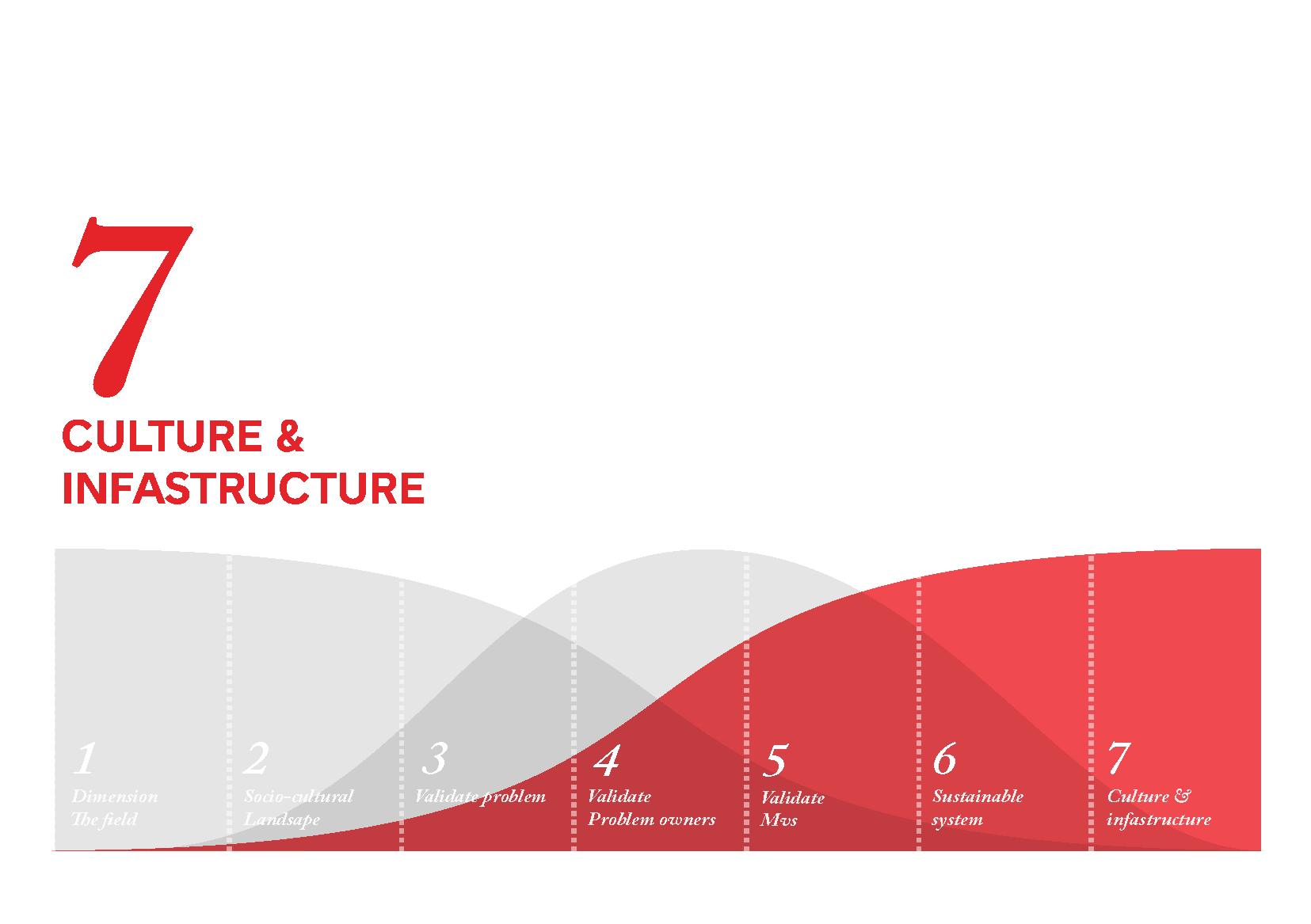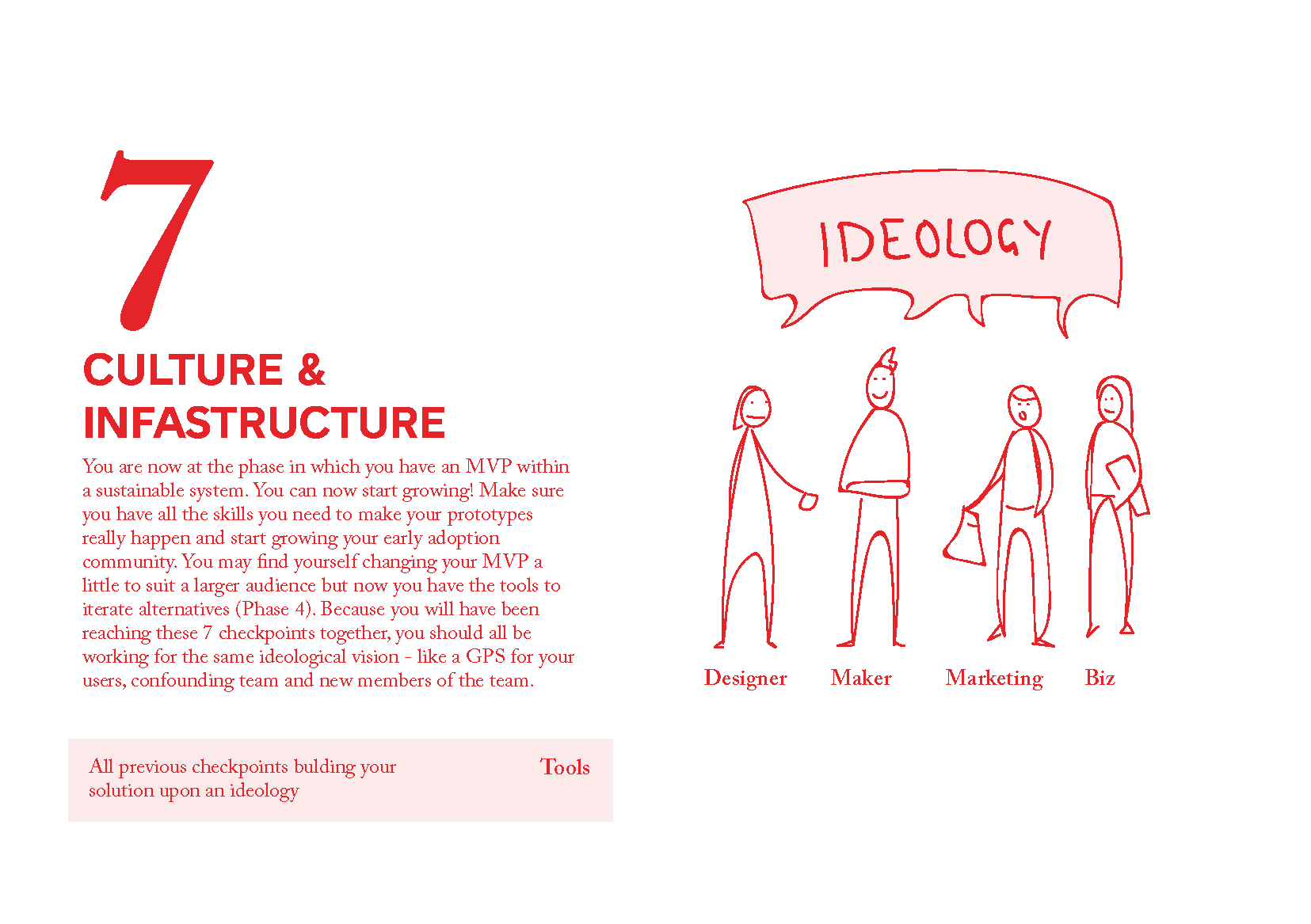Thesis:
A framework synthesising
design thinking with entrepreneurial methods
Project context
This project challenges the methods which shape our markets by deconstructing then reconstructing design and entrepreneurial approaches to innovation to ensure the more ideological solutions are the ones that shape our reality.
Synopsis
As popularised by Marzino and John wood; ’High design’ or ‘Metadesign’ calls for the application of design thinking to ‘deal with the complexities of new products and markets’ [Wood.J]. It is with this approach that this paper seeks to challenge the methods which create the markets and products of today.
In order to do this, we must identify three key approaches influenced by two schools of thought; (1) Design, (2) the Entrepreneurial approach and the recent hybridisation of the two which I have classified as; (3) Hybrid methods.
As a result of these 'hybrid' methods designers are beginning to move into domains once occupied by entrepreneurs; applying their creativity to disruptive business models to directly challenging the cultural orthodoxies of the day. Equally, entrepreneurs are adopting design methods to iteratively test and create problem-solutions for their early adopters with the ‘customer segment/market’ being the most vital piece in the ‘business model canvas’.
However, despite the rise of these new Hybrid methods, only 30% of start-ups succeed past the first two years, and only 4% of radical innovation is adopted. In a world of wicked problems and ubiquitous growth this paper seeks to understand the strengths and weaknesses of all three approaches according to their application in society. The strengths of each approach have been identified and referred to as four differentials; (1) Radical versus Incremental innovation, (2) Sense-making versus Validation, (3) Ideologies versus Business models and finally (4) Qualitative versus Quantitive data. Just like the two leading schools of thought (design and enterprise) these differentials represent two very different cultures of problem solving at different phases of an innovation process.
It is therefore the objective of this paper to (in theory) create a framework in which the strengths if three approaches may be compatible throughout a complete innovation process. This framework is currently under the working title of the 'Hybrid Innovation Process' (HIP).
Phase 1
Identifying leading innovation methods
A brief history of the recent hybridisation of both design and entrepreneurial approaches to innovation.
THE PRODUCT-CENTRIC NINETIES
The 90s was the dawn of the information revolution, pioneered by new digital technology. In this culture of thinking the more speed and memory the better. Just like the industrial revolution performance was everything. This was reflected in the principle entrepreneurial model; Product development, in which the focus was on the product itself as innovation processes adopted the ‘waterfall’ production processes. This product development model was best suited to a hierarchical organisation structure as requirements were passed down from the CEO, to be translated by the designers into something more tangible before manufacturing. The product itself was only briefly tested at the end of this process prior to the launch in which only then was it wholly validated with the end users.
However, as the internet gradually afforded many more applications, it acquired more users; with '<1% in 1995' to '39% in 2014' of the global population use the internet. Like light or sound, this new raw medium; information provided a petri dish for radical innovations that changed the meaning of our everyday activities.
“We live in an age in which the industrial society, based on manufacturing physical goods and selling them to consumers, is giving way to a society in which information and services are much more important.” [Kees Dorst]
FROM PRODUCT-CENTERED TO HUMAN-CENTERED
Backed with a fat business strategy and marketing forecasts in a ‘static environment’ the nineties Product Development Model was no longer viable at navigating a post-industrial economy [lean start-up] “…Even with all these procedures the embarrassing fact is that 9/10 of the new products were failures” [CD S.blanks]
A new approach was needed to ’operate in such uncertainty.’[Ries] ‘Start-ups do not yet know who their customer are or what their product should be.”[lean start-up] Hence in 2005, the ‘Customer Development Model’ was introduced to the entrepreneurial school of thought, reorientation the focus from the ‘product’ to the ‘customer’ in a iterative production process - the antithesis of the ‘waterfall model’. Designers understand this as Human Cantered Design.
However, the origins of Human-cantered design in entrepreneurial methods suggest the justification for this shift was to reduce risk saving time, money and materials. ‘how to make products that people will love without wasting a lot of time and money. As referenced in the case study of Webivan in the majority of CDM backed publications; “Webvan spent $400million on an automated warehouse system, just to figure out people were not ready to shop for groceries online.”[Lean UX] With an increase in mobile internet users, came an increased usage from two daily interactions on our PC, to around 150 unlocks on the average mobile phone per day in 2015. What could have been a tolerably bad experience twice a day would become frustratingly unusable 150 times a day. Or as the chorus of Idean’s UX internet Mime goes; “Life’s too short for crappy UX” popularising a new hybrid role; the user experience designer. Their role within start-ups and corporations alike not only to design for usability but also the customers experience through the full product lifecycle. And so, in the words of Eric Schmitt [google
co-founder] “Power has shifted from companies to consumers, and expectations have never been higher, a bad review trumps any intelligent advertising strategy” hence the design conscious entrepreneur was born.
As a result of this change in priorities seven out of the global top ten business schools have student led design clubs such as D school at Stanford and Harvard I-lab. “Business students are graduating the mindset of what does the customer wasn't, what do they need." -Ashwin Rajan.
INFLUENCES ON THE DESIGN WORLD
So as entrepreneurs have begun to adopt design methodologies, designers have also been to see the benefit in applying such approaches to their work not just to communicate their ideas as a viable proposition to investors and clients but sometimes make their ideas happen. Having graduated from design school: Rode Island, Brian Chesky moved his start-up ‘air B&B’ to Silicon Valley where he made the observation “Being designers… they thought we were people that worked for people that ran companies.” This marked perceptive change (from 2013-2015) “twenty percent of the top cumulative funded VC backed ventures have designers as co-founders” [j.madea] Each one radically disrupted traditional business models as they changed the meaning of what is is to learn, read the news, purchase, curate and rent to their customers.
This change in perceptions from the business minded start-up community is expected to make funding more accessible to designers as they prove that by adopting design methodologies at the start of any innovation process, is an ‘investment’ not an ‘add on’. As a result the average ratio of designers to engineers of early stage start-ups is 1:4/5. [madea] Touko Kontro [Start-up Weekend Helsinki 2016 mentor] “Designers are part of the holy trinity of a start-up team; design, marketing and development”
These methods have empowered designers to not only act on their visions of the future by intergrading hybrid methods into their own design discourse. Gravity tank design consultancy was another company who has adopted these methods directly into their traditional design discourse called ‘work differently.’ Design consultancies have also begun to shift their offerings to the client from products and services to meta-design methods and frameworks taking more of a strategic position within industries. Eon and Nile are just some of these teaching employees the methods and approaches of ‘design thinking.’ This change occurred within the last decade uniting in leading entrepreneurial and design methodologies, under the same vision to create value for their customers.
AN EVEN LEANER APPROACH
In 2013 Eric Reis evolved the customer development model with influences from ‘design thinking’ and ‘Tokyo’s lean manufacturing’ methods to create; Lean start-up methods. Around the same time came the business model canvas by Steve Blank claiming to describe ‘the rational of how an organisation creates delivers and captures value.’
Following this came many new hybrid methodologies, some directly aimed at designers ‘Lean user experience “but lean UX also introduces a few new things that aren’t found in
other design practices. It takes the best parts of the design practices that have come before it,” adopting Validation, User Centred Design, Agile, Data, and Iteration. The business model canvas was then re-appropriated for designers by Alex Osterwalder in the Business Model Generation, further popularising human centred methods by making them visual and accessible. Osterwalder then took UCD to a deer level by focussing on the customer segment and Value proposition tile within the business model canvas - as being the foundation of a successful offering called the Value Proposition Canvas. His belief was that by understanding your user’s needs; including social and emotional (within the Customer Segment Sphere) you can create pain relievers and gain creators (within the Value proposition sphere) to exceed the customers’ expectations by creating ‘products and services customers want.’
Phase Two
Classification of different approaches in order to compare competences throughout a full innovation process.
“Each school of thought is best suited to different phases of a full innovation process.”
Design method capabilities
Making sense of the problem situation; by identifying socio-cultural factors, motivations and relationships between stakeholders in order to frame the problem well. These methods often result in ideological & radical solutions.
Design method limitations
Methods often created for a consultancy model, Project hand-overs often detaches the hypothesis from the idea making it difficult to test & iterate upon in the context it was designed for.
Hybrid method capabilities
Strong validation capabilities, having adopted human entered approaches from design in order to navigate the uncertain 21st century.
Hybrid method limitations
Often start with the solution, at best validating the problem using binary inductive rational. Either the a hypothesis is true or false. This extreme Human entered approach is more likely to result in safe incremental innovation.
Entrepreneurial method capabilities
Strong validation capabilities, having adopted human entered approaches from design in order to navigate the uncertain 21st century.
Entrepreneurial method limitations
Product Centred approach wastes a lot of time and capital as solutions are only tested at the end of the production process (Waterfall methods of the 1980s)







